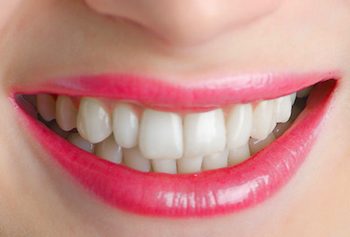- MENU
- HOME
- SEARCH
- WORLD
- MAIN
- AFRICA
- ASIA
- BALKANS
- EUROPE
- LATIN AMERICA
- MIDDLE EAST
- United Kingdom
- United States
- Argentina
- Australia
- Austria
- Benelux
- Brazil
- Canada
- China
- France
- Germany
- Greece
- Hungary
- India
- Indonesia
- Ireland
- Israel
- Italy
- Japan
- Korea
- Mexico
- New Zealand
- Pakistan
- Philippines
- Poland
- Russia
- South Africa
- Spain
- Taiwan
- Turkey
- USA
- BUSINESS
- WEALTH
- STOCKS
- TECH
- HEALTH
- LIFESTYLE
- ENTERTAINMENT
- SPORTS
- RSS
- iHaveNet.com: Health
Harvard Health Watch

The American Dental Association recommends consulting your dentist before using any tooth bleaching product
The eyes may be the windows to the soul, but the teeth may also be the first thing others notice.
Maybe it was your 35th high school reunion photograph -- or perhaps an innocent remark by a grandchild -- but now you're self-conscious about your dingy teeth, and you're thinking about whitening them. Dentists can perform or supervise various whitening procedures, and over-the-counter whitening products are available at drugstores and supermarkets. What's best for you depends on several things, including the type of discoloration and the amount of time and money you're willing to spend.
There are two main types of whitening products.
Some, chiefly whitening toothpastes, remove surface stains by polishing with chemical agents or mild abrasives. These don't alter the tooth's natural color and can only lighten its appearance slightly. The other type of product contains a peroxide bleaching agent (carbamide peroxide or hydrogen peroxide) that changes the color of the tooth and can lighten it by several shades. Our focus here is on these products.
Getting help from a dentist
Your dentist can evaluate whether bleaching is right for your teeth, since different kinds of discoloration respond differently to whitening. For example, bleaching works for most stains caused by age, smoking, and regular coffee or tea drinking, but it may not be effective against discoloration that results from tetracycline use in children under age 8. (Tooth discoloration can also occur in a child whose mother took tetracycline while pregnant.) Finally, even if you choose the over-the-counter route, your dentist can advise you on the relative merits of the products available.
Dentist-supervised procedures include the following:
--In-office bleaching. A neutralizing gel or a rubber shield is placed on your gums to protect them. Your dentist then applies a peroxide bleaching agent to your teeth and exposes them to a bright light or laser to hasten the lightening. Achieving the color you want usually takes three to four sessions, each lasting 30 to 60 minutes. A new technique, called power bleaching, uses a highly concentrated form of hydrogen peroxide and requires only one session. In-office bleaching costs
--Dentist-prescribed home bleaching. Your dentist takes an impression and makes a custom-fitted mouthpiece to hold the peroxide bleaching gel. You wear the gel-filled mouthpiece for an hour or two every day, or overnight, for a week or two. Some users experience tooth sensitivity, but it usually subsides once the treatment is complete. Dentist-prescribed home bleaching for the whole mouth costs
--Bleaching teeth with pulp damage. If your tooth has darkened because the pulp (the soft interior of the tooth) is dead or injured, your dentist can treat the pulp chamber with a bleaching agent during root canal therapy.
Over-the-counter bleaching products
All of the following over-the-counter products contain peroxide as their active ingredient. The concentration is lower in these agents than in the products dentists use, and the cost is substantially lower, ranging from
--Whitening strips. You apply these thin, flexible pieces of plastic directly to the teeth, usually for a half-hour once or twice a day for five days to two weeks. (Strips used for a shorter time have a higher concentration of peroxide and may cause greater tooth sensitivity.) The effects can last for up to 12 months.
--Gels. All gels are similar, though some are applied with a small paintbrush and others come in a penlike applicator or are placed in a mouthpiece. Gels are typically applied daily before bedtime and left on overnight, usually for about two weeks. Effects may last up to six months.
--Whitening rinses. Whitening rinses are swished through the teeth for 60 seconds twice a day before brushing and are used on an ongoing basis. (A 16-ounce bottle -- about a one-month supply -- costs
Safety and effectiveness
There's very little evidence on the long-term safety and effectiveness of tooth-whitening products or procedures. No over-the-counter bleaching product carries the ADA Seal of Acceptance, and the organization recommends consultation with a dental professional before using them.
An analysis of clinical trials by the independent Cochrane Collaboration concluded that whitening products appear to be effective, but consumers should be better informed of side effects such as tooth sensitivity and gum irritation. Noting that the products' manufacturers sponsored most of the studies, the reviewers recommended more independent research.
Whitening products aren't recommended for children under age 16, for women who are pregnant or breast-feeding, for people with sensitive teeth or an allergy to peroxide, or for those with gum disease or worn tooth enamel. If any whitening product causes irritation or mouth sores, you should stop using it immediately and see your dentist. - Harvard Women's Health Watch
© Harvard Health Watch
AGING | ALTERNATIVE | AILMENTS | DRUGS | FITNESS | GENETICS | CHILDREN'S | MEN'S | WOMEN'S
Health - Time for Tooth Whitening? Know Your Options